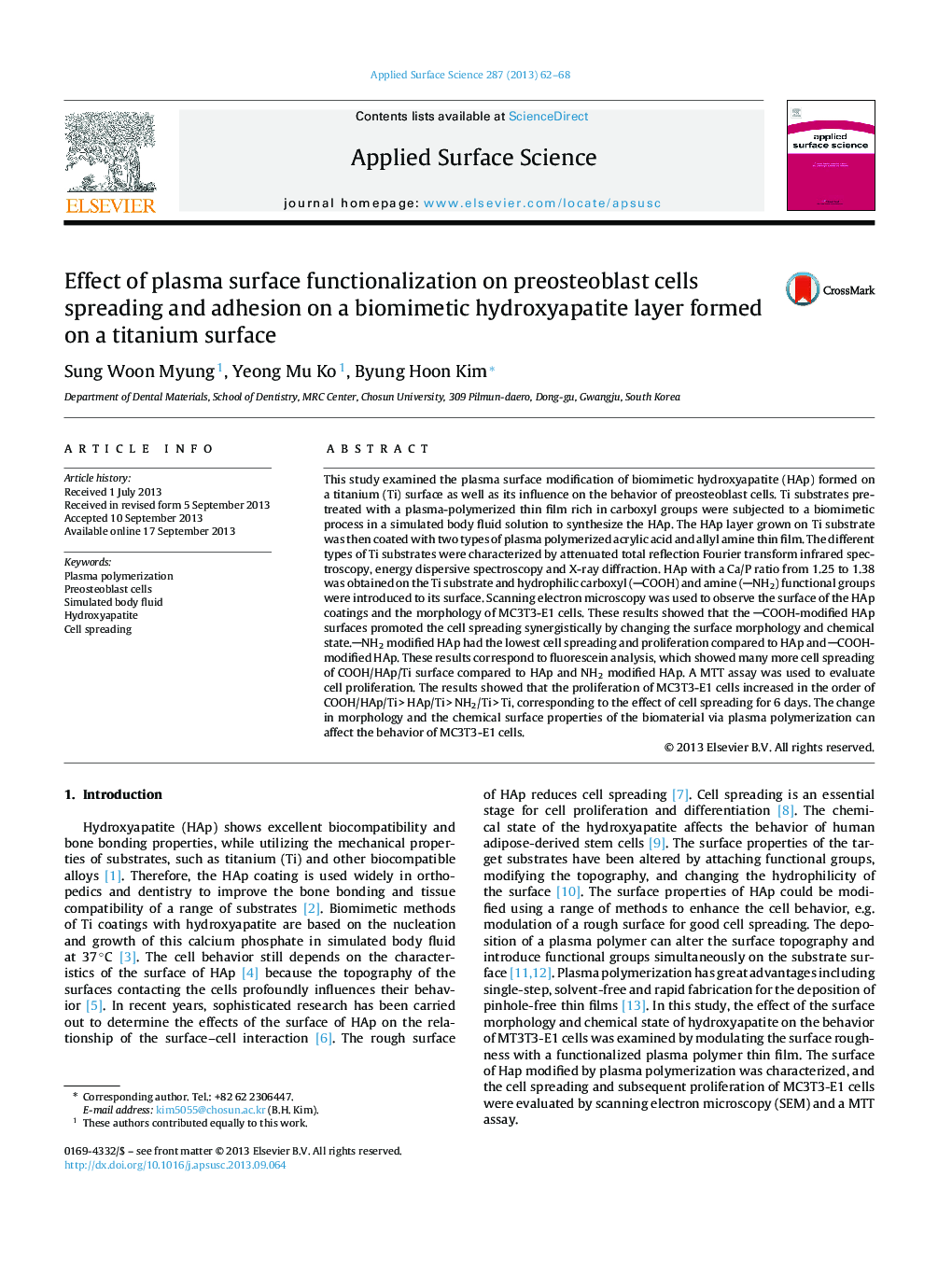| Article ID | Journal | Published Year | Pages | File Type |
|---|---|---|---|---|
| 5359361 | Applied Surface Science | 2013 | 7 Pages |
Abstract
This study examined the plasma surface modification of biomimetic hydroxyapatite (HAp) formed on a titanium (Ti) surface as well as its influence on the behavior of preosteoblast cells. Ti substrates pre-treated with a plasma-polymerized thin film rich in carboxyl groups were subjected to a biomimetic process in a simulated body fluid solution to synthesize the HAp. The HAp layer grown on Ti substrate was then coated with two types of plasma polymerized acrylic acid and allyl amine thin film. The different types of Ti substrates were characterized by attenuated total reflection Fourier transform infrared spectroscopy, energy dispersive spectroscopy and X-ray diffraction. HAp with a Ca/P ratio from 1.25 to 1.38 was obtained on the Ti substrate and hydrophilic carboxyl (COOH) and amine (NH2) functional groups were introduced to its surface. Scanning electron microscopy was used to observe the surface of the HAp coatings and the morphology of MC3T3-E1 cells. These results showed that the COOH-modified HAp surfaces promoted the cell spreading synergistically by changing the surface morphology and chemical state.NH2 modified HAp had the lowest cell spreading and proliferation compared to HAp and COOH-modified HAp. These results correspond to fluorescein analysis, which showed many more cell spreading of COOH/HAp/Ti surface compared to HAp and NH2 modified HAp. A MTT assay was used to evaluate cell proliferation. The results showed that the proliferation of MC3T3-E1 cells increased in the order of COOH/HAp/Ti > HAp/Ti > NH2/Ti > Ti, corresponding to the effect of cell spreading for 6 days. The change in morphology and the chemical surface properties of the biomaterial via plasma polymerization can affect the behavior of MC3T3-E1 cells.
Related Topics
Physical Sciences and Engineering
Chemistry
Physical and Theoretical Chemistry
Authors
Sung Woon Myung, Yeong Mu Ko, Byung Hoon Kim,
